
Curator’s statement
The Azores feel like Europe’s best-kept secret—islands in the middle of the Atlantic where crater lakes glimmer in shades of green and blue, geothermal springs bubble beneath hydrangea-lined roads, and life slows to a rhythm dictated by the breeze. These islands echo the dramatic beauty of Iceland and New Zealand, with their volcanic peaks, lush landscapes, and skies that shift by the hour. Ideal for those who crave scenic drives, peaceful hikes, and the quiet magic of untouched nature, the Azores offer a sense of discovery without the crowds. And with direct flights just five hours from the East Coast of the States, this remote-feeling escape is closer than you’d think.
The Fora Difference
Book with Emily to access exclusive perks and experiences on your trip.
Killer perks
Free upgrades, spa credits and more—we got you
Personalized recs
Customized travel planning for your style
Insider knowledge
Expert advice from people who’ve actually been there
Where to stay
Unlock perks by contacting Emily to book your trip.
Day 1: Arrival in Sao Miguel – embrace island life

Ponta Delgada, Sao Miguel. Credit: Emily Rogers
Upon arrival at Ponta Delgada (PDL) on Sao Miguel island, pick up your rental car and settle into your island accommodation.
Spend the afternoon exploring the historic Ponta Delgada city center and strolling along the waterfront. The city is known for its black-and-white Portuguese cobblestones, traditional azulejo tilework, and baroque architecture—most notably the striking three-arched city gates (Portas da Cidade) that face the harbor.
For dinner, enjoy Azorean tapas and regional wines at A Tasca.
Day 2: Furnas – gardens, geysers & tea plantations
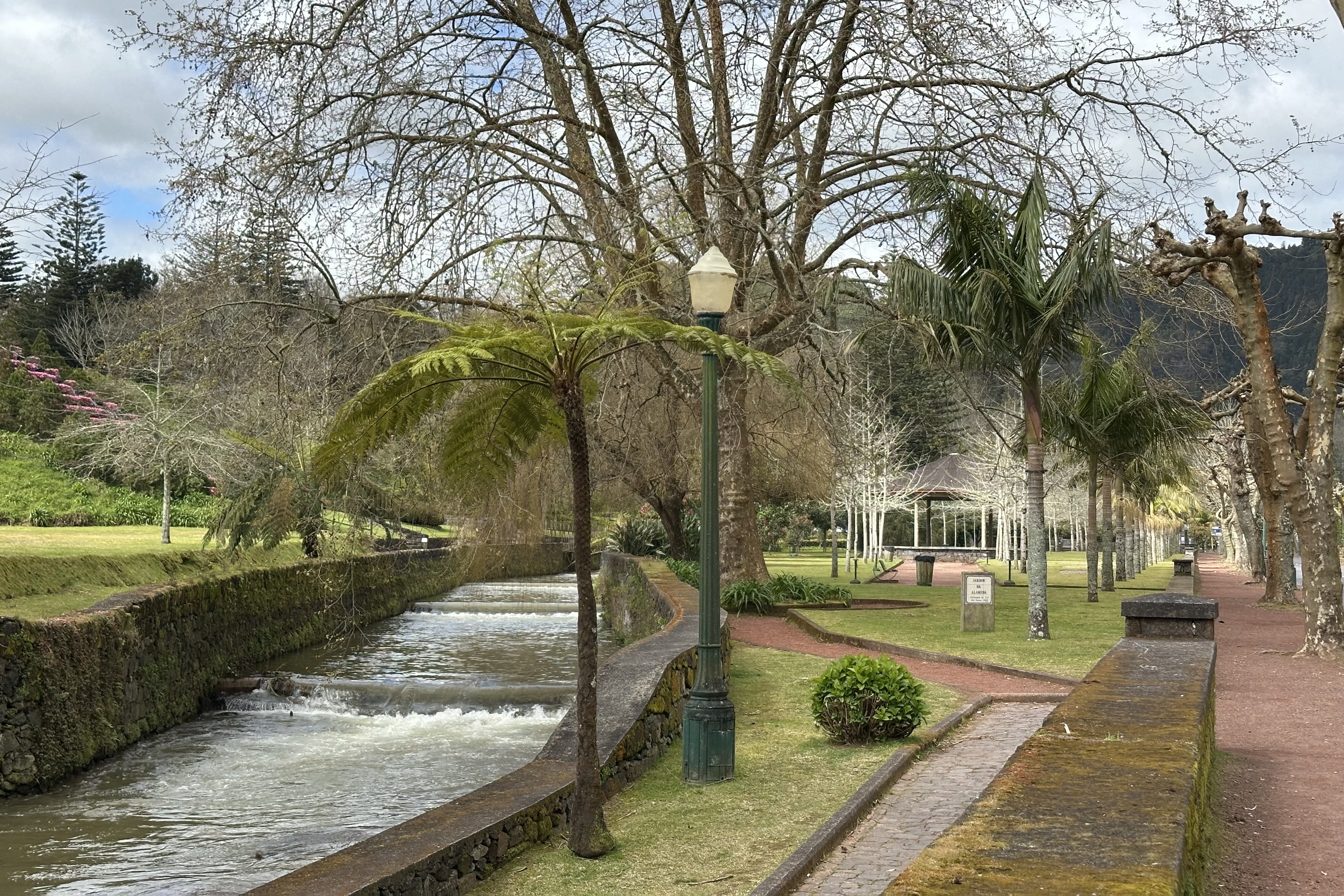
Furnas. Credit: Emily Rogers
Today, drive to Furnas, a quaint village in a geothermal valley known for its hot springs and lush gardens. Begin with a visit to Terra Nostra Garden, a lush, botanical paradise that feels like stepping into another world. Set within a volcanic valley, the garden spans over 12 hectares and is home to winding walking paths, rare and exotic plant species, centuries-old trees, and serene ponds. At its center lies a large, rust-colored geothermal thermal pool, rich in iron and minerals, where visitors can soak surrounded by greenery. Originally established in the 18th century, the garden combines natural beauty with a sense of timeless tranquility, making it one of the most enchanting places in the Azores. Guests staying at Terra Nostra Garden Hotel have the added benefit of 24/7 access to the gardens and pools, allowing them to enjoy the haven outside of public visiting hours.
For lunch, savor the traditional "cozido das Furnas," a stew slow-cooked in volcanic soil, at Caldeiras & Vulcoes Restaurante. In the afternoon, explore the fumaroles and visit the Furnas Monitoring & Research Center, which is an interactive educational space that showcases the region’s volcanic activity, geothermal features, and environmental conservation efforts in the Furnas Valley.
On your return, stop at the Gorreana Tea Plantation, Europe's oldest tea producer, for a self-guided tour of the fields, followed by a tasting (and a visit to the gift shop, of course).
Conclude the day with a farm-to-table dinner at the restaurant at da Associacao Agricola de Sao Miguel, renowned for its high-quality Azorean beef steaks.
Day 3: Sete Cidades – crater lakes & coastal views
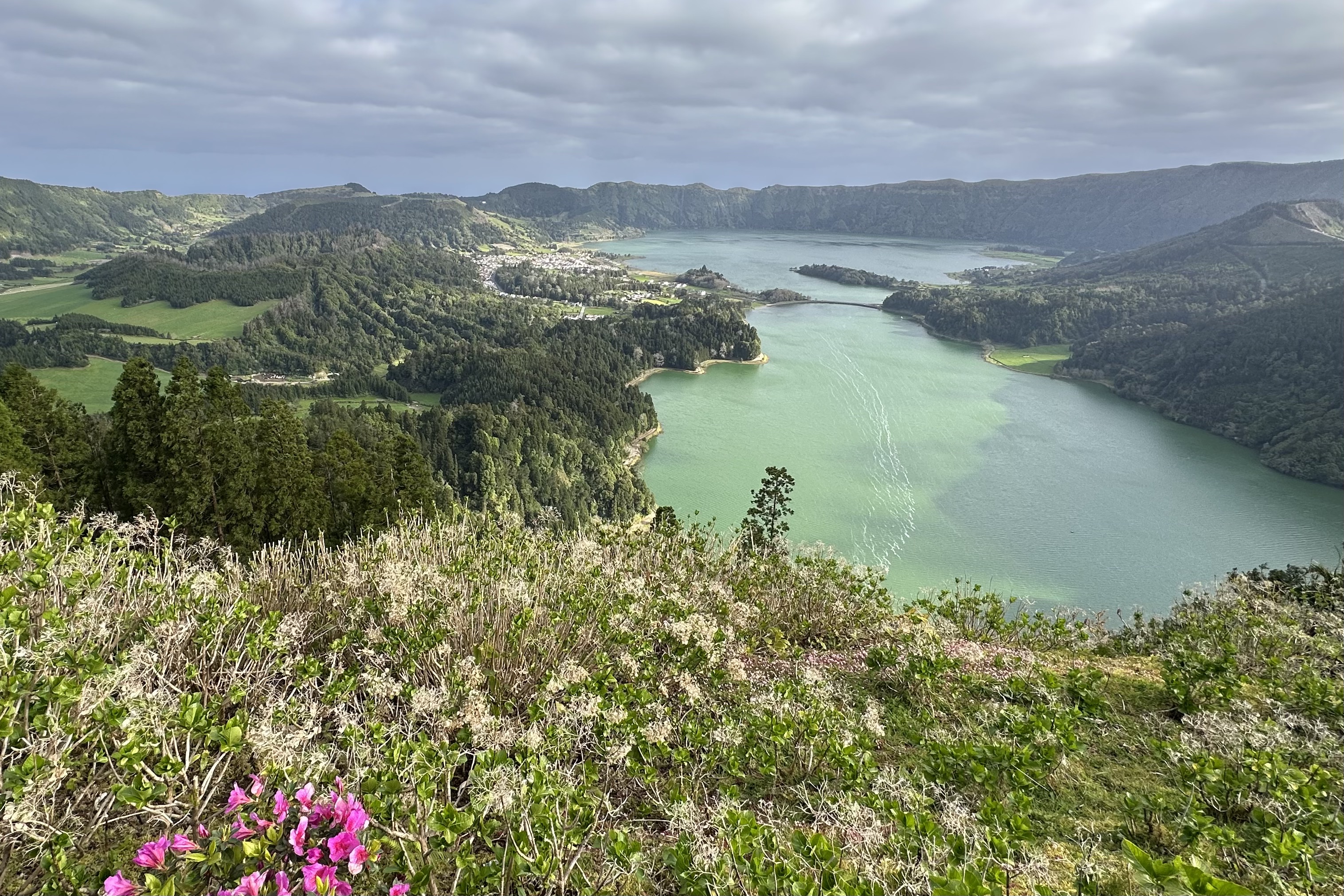
Sete Cidades. Credit: Emily Rogers
Charge your phone as today will fill your camera roll with a plethora of scenic shots. Keep an eye out for Miradouros (viewpoints) as you’ll want to pull over to explore these convenient lookouts that often have little trails off them to explore.
Embark on the scenic drive towards the Sete Cidades caldera, stopping at iconic viewpoints like Miradouro da Boca do Inferno and Vista do Rei for panoramic views of the twin lakes. If you’d like to get off the beaten path, activities in the area include off-road jeep tours and kayaking or paddleboarding on the lakes. If you’re feeling especially adventurous, you can hike the Sete Cidades loop trail, a 13-mile loop around the entirety of the crater, offering expansive views of the crater and ocean from every angle.
Continue driving through the crater and exit on the opposite side to enjoy views from all angles. Continue to Miradouro da Ponta do Escalvado, a dramatic lighthouse lookout point and then on to Mosteiros, a quaint little seaside town known for its black-sand beaches and natural swimming pools. During the summer, food trucks line the waterfront, making for a convenient place to grab a bite to eat after a hike and refreshing swim.
Return to your hotel for some time at leisure and to enjoy the spa.
Day 4: Fly to Pico Island – wine, lava, and ocean views
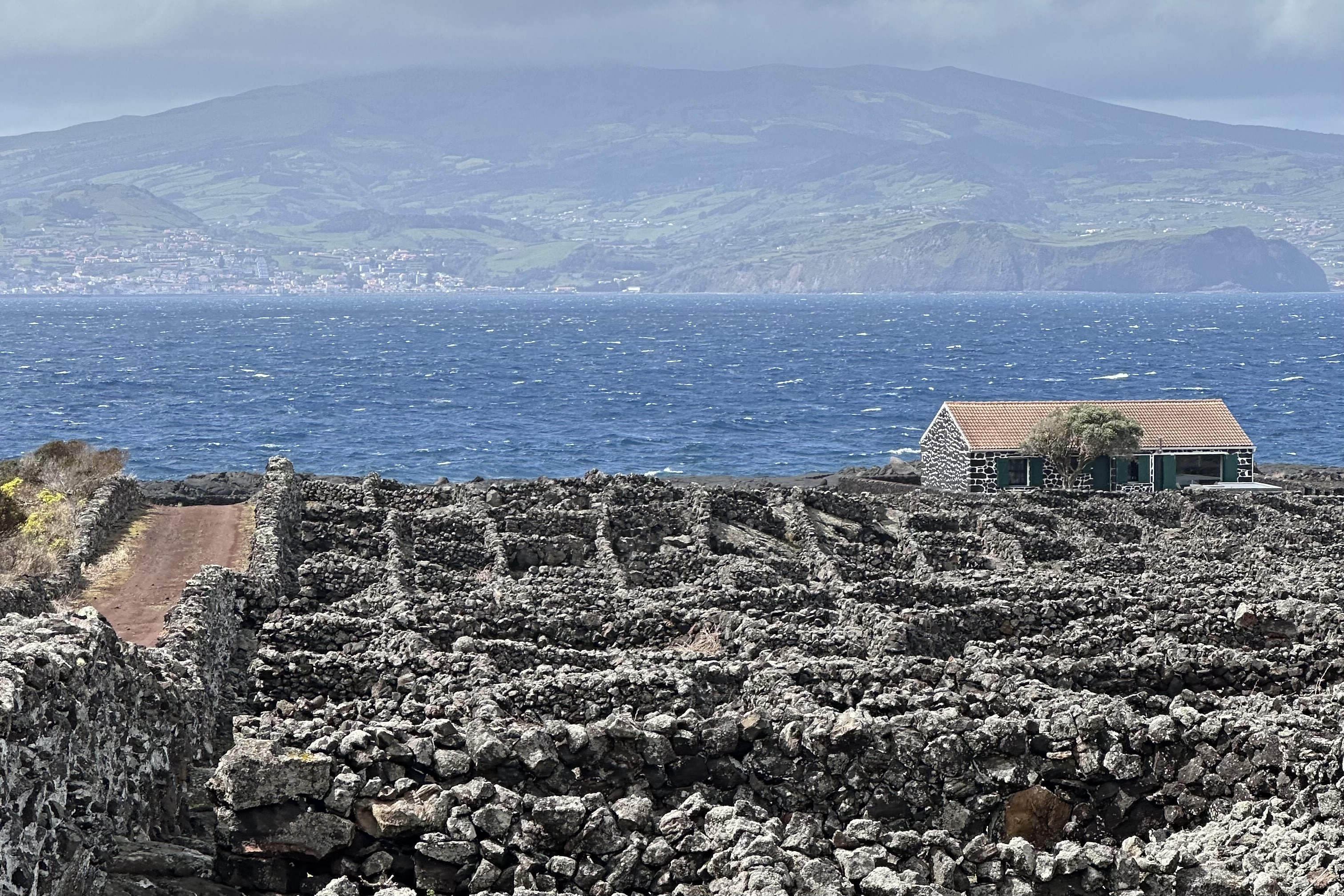
Madalena, Pico. Credit: Emily Rogers
Take a morning flight to Pico Island (PIX), pick up your rental car, and explore nearby Madalena village. Madalena is a picturesque coastal village nestled between the Atlantic Ocean and the imposing Mount Pico. Renowned for its UNESCO-listed vineyards, where vines grow in black basalt stone enclosures, Madalena offers a unique blend of natural beauty and cultural heritage.
Explore the UNESCO-listed volcanic vineyards and visit the Wine Museum (Museu do Vinho) to learn about his fascinating viticulture. Afterwards, put your knowledge to the test at Adega do Vulcão or the Pico Wines Cooperative.
For dinner, dine at nearby Cella Bar, known for its stunning architecture and ocean views.
Day 5: Pico adventure day – hike, swim, or explore

Pico Mountain. Credit: Emily Rogers
Today is all about adventure, with several unforgettable experiences to choose from. For the truly ambitious, consider climbing Mount Pico—Portugal’s highest peak at 7,713 feet. This is a demanding full-day hike, and hiring a local guide is highly recommended, as the trail can be steep, unmarked, and exposed. For a more relaxed but equally rewarding day, explore Pico’s vast network of lava tubes and caves, take a dip in natural ocean pools, or drive along scenic inland roads to discover the island’s highland lakes and internationally protected wetland areas. There are a few outfitters and adventure guides in Madalena with chalkboards outside advertising their upcoming adventures.
Day 6: Whale watching & Pico highlands

Pico. Credit: Emily Rogers
In the morning, embark on a whale and dolphin-watching tour from Lajes do Pico, one of the best locations in the Azores for spotting these majestic creatures.
Afterwards, explore Lajes do Pico, a historic coastal town on the southern shore of Pico Island, known as the birthplace of the Azorean whaling industry. Once a bustling whaling port, today it’s a peaceful village that honors its maritime heritage through the excellent Museu dos Baleeiros (Whalers’ Museum), located in former boathouses. Surrounded by dramatic cliffs, traditional lava stone houses, and views of the Atlantic, Lajes do Pico offers a quiet charm and deep connection to the island’s seafaring past.
For lunch, drive down the coast a bit to dine at Mar Sushi Terrace, offering fresh Azorean fish and stunning coastal views (save room for the lemon pie).
After lunch, if not covered by clouds, head up to Pico's highlands for a scenic stopping to explore the unique alpine lakes and scenic landscapes.
Conclude the day with dinner at Magma Restaurant at Lava Homes, offering some say the best food on the island with sweeping terrace views of Pico Island and nearby Sao Jorge Island.
Day 7: Day trip to Faial – caldera views & marina culture
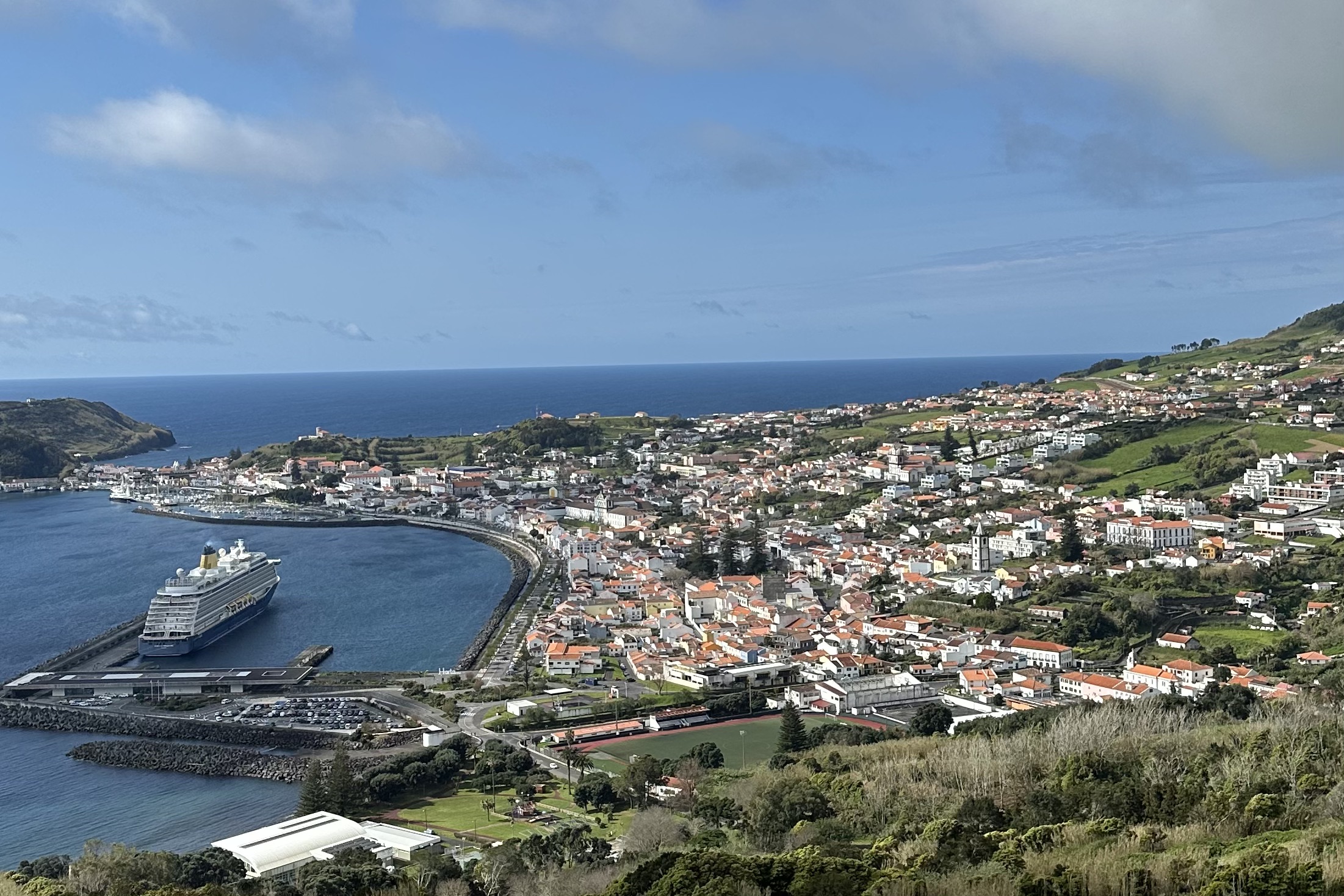
Horta, Faial. Credit: Emily Rogers
This morning, take the short 30-min ferry from Madalena to Faial Island.
Begin with a visit to Caldeira do Faial, a massive volcanic crater with sweeping views across the island.
For lunch, stop at Restaurante Pasquinha in Salão, known for its stunning views and typical Portuguese dishes. If they have lapas/limpets (a type of mollusk, similar to clams, that are commonly grilled with butter, garlic, and lemon).
Drive counterclockwise around the island, stopping at the end to explore the Capelinhos Volcano Interpretation Center, which tells the story of Faial’s dramatic 1957–58 eruption.
On your way back towards the port, visit the Centro de Artesanato do Capelo, featuring art crafts and souvenirs made lovingly by local artisans.
End the day in Horta, one of the most famous transatlantic sailing ports in the world. Its marina is a storied waypoint for yachts crossing the Atlantic, where sailors paint murals on the harbor walls. Soak up this seafaring spirit with cocktails and dinner at the legendary Peter Café Sport, a beloved institution among global mariners.
Return via ferry to Pico.
Day 8: Return to São Miguel – final impressions
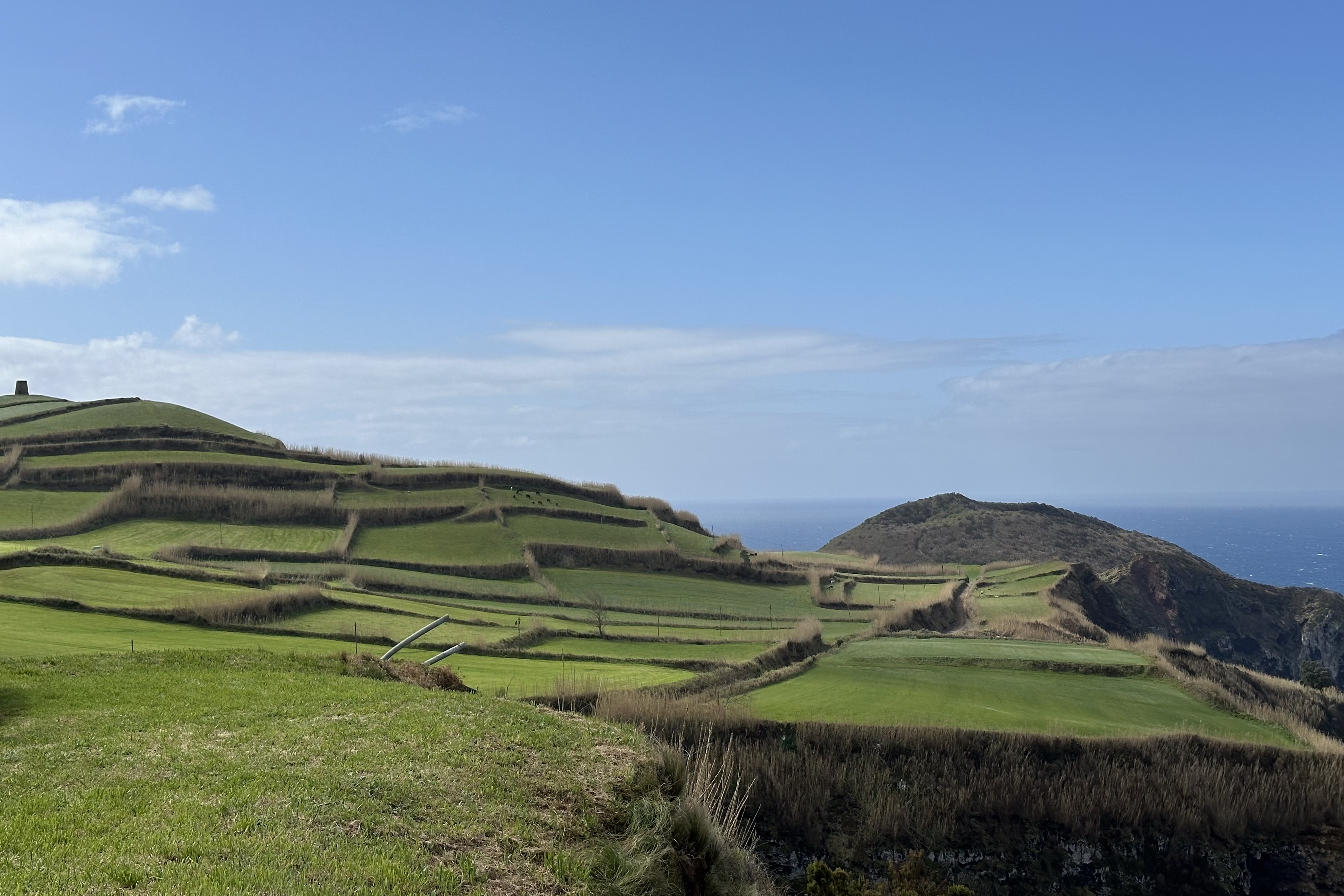
Sao Miguel. Credit: Emily Rogers
Fly back to São Miguel (it’s best to leave a day buffer to make your onward international flight in case of bad weather).
Stop by pineapple plantation Plantação de Ananás dos Açoresnear Ponta Delgada to learn about the unique greenhouse cultivation of the unique variety of local pineapple.
For lunch, head across the island, and dine at Santa Bárbara Eco Beach Resort, offering sweeping views of the nearby cliffs and dishes that celebrate the essence of the Azores with local and seasonal ingredients.
Afterwards, head towards Lagoa do Fogo and for a final hot springs dip in Caldeira Velha.
Conclude your trip with a farewell dinner at Quinta dos Sabores, a farm-to-table gem in a rustic farmhouse.
Day 9: Departure

Sao Miguel. Credit: Emily Rogers
Enjoy a final espresso and pastel de nata before departing from Ponta Delgada Airport (PDL).
Need to know
Bonus tips for visiting the Azores:
Driving: Renting a car is essential on each island. Drive counterclockwise to easily access scenic overlooks (Miradouros). Note that automatic cars are limited; your travel advisor may re-arrange your trip around the availability of rental cars.
Weather: Expect four seasons in one day. Pack layers and waterproof gear. Be flexible with your plans and take advantage of good weather days for your priority sites and activities.
When to visit: April to October offers the best balance of weather and activity options, with June–September being peak season for whales and flowers.
Activities: Ideal for eco-conscious travelers who enjoy light adventures like hiking, whale watching, and exploring.
Pairs well with: Consider pairing the Azores with mainland Portugal. The flights from the US East Coast operate as red-eyes with no lay-flat seats available. Consider flying lay-flat to Lisbon or Porto for a few days prior to flying to the Azores (a 2hr flight from mainland Portugal).

Travel Advisor
Emily Rogers

Get in touch with Emily
Did you like this guide? Reach out to customize and book your own experience. Or, just to chat about travel in general.
You can expect a response from Emily within 1–2 business days. You’ll also be subscribed to our traveler newsletter (you can unsubscribe at any time).
For more inspiration and insider recommendations, visit our Portugal page.